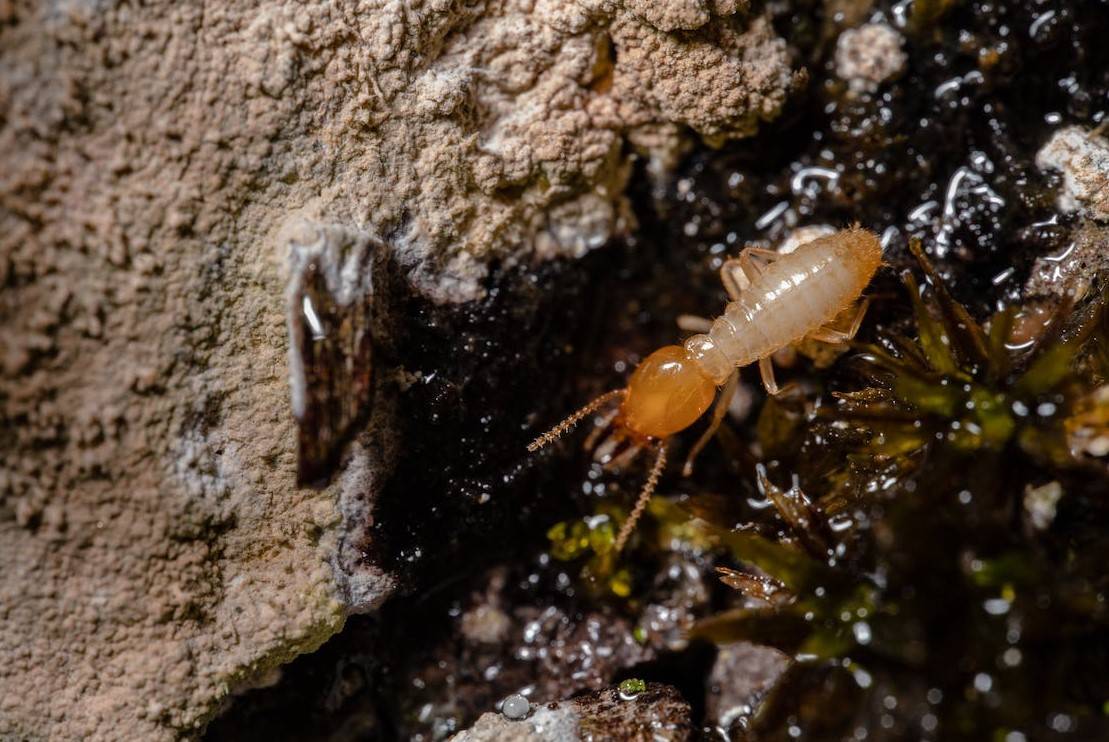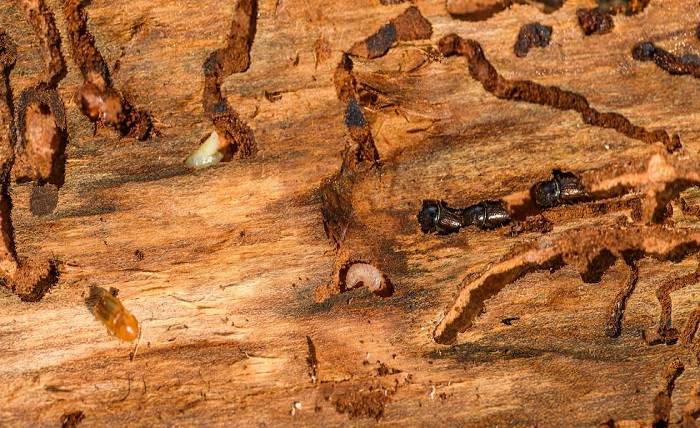Nothing can ruin the lazy days of summer faster than finding termites invading your home. As the weather warms up, these destructive pests become more active and more likely to infest houses. Dealing with termite problems requires quick action and diligence to get rid of them and prevent costly damage.
That’s why in this article, we will explore effective strategies to eliminate termites during the peak summer months. We’ll cover understanding termite behavior patterns, preventative measures to make your home less inviting, treatment options for active infestations, properly preparing the house before applying treatments, tips for after treatment, and when it’s best to call in professional extermination services.
KEY TAKEAWAYS
- Termites are more active in summer, so be vigilant in looking for signs like swarmers, mud tubes, and wood damage.
- Prevent infestations by eliminating wood-to-ground contact, moisture sources, and wood debris around your home.
- Liquid termiticides provide strong chemical treatment for existing infestations, while boric acid and diatomaceous earth give non-toxic options.
- Proper preparation like sealing cracks, accessing infested areas, and ventilating spaces improves treatment results.
Table of Contents
Understanding Termite Behavior in Summer
Termites thrive in the warmer temperatures of summer. Their activity increases as they swarm and search for new food sources to feed their growing colonies. Signs like swarmers emerging inside, mud tubes on foundations, and damaged wood indicate active infestations.
Understanding termite behavior patterns can help you identify problems early and take quick action. The combination of warmer weather and peak feeding needs causes termites to go into reproductive swarming mode in summer. Alates, or winged swarmers, will emerge inside homes from colonized areas.
Outside, mud tubes along foundation walls protect termites as they follow pheromone trails to find new wood sources. Inside your home, look for swarmer wings, mud tubes, and wood that sounds hollow when tapped.
Preventing Termite Infestations in Summer
Preventing infestations in summer starts with making your home less attractive to termites. Trim back trees and shrubs so they don’t touch or overhang the house. Eliminate wood debris and standing water sources around the foundation.
Installing termite barriers and traps can also help intercept termites before they invade your home. Keeping the yard free of wood debris also eliminates food sources. Preventing moisture buildup near the home through proper drainage and gutter cleaning deters termites too. Nevertheless, getting annual inspections with the best pest control company can effectively detect early signs of activity before major damage occurs.
Chemical Treatments for Existing Infestations
Once you confirm termites are inside your home, chemical treatments give the most powerful and lasting results. Professional-grade liquid termiticides get deep into wood structures, providing residual protection as termites ingest the poison for months or years.
Fipronil, imidacloprid, and pyrethroids are common active ingredients approved for termite treatment. Professional application is best for difficult access spots like in slabs, behind walls, and in deep foundation cracks.
However, some DIY products containing these ingredients are available in more manageable sizes for limited homeowner spot treatments. Always read labels thoroughly and take proper safety measures when handling liquid termiticides. Proper personal protective equipment and careful application prevent harm to people, pets, or the greater environment.
Non-Chemical Treatments
For homeowners wanting to avoid chemicals, boric acid is one of the most effective physical control options. The powder is worked into wall voids and wood frameworks where termites travel. The particles damage their bodies, eventually killing them.

Diatomaceous earth works similarly – the fine silica shreds their bodies on contact. Natural essential oils like clove, eucalyptus, and tea tree also deter termites and can be sprayed onto infested wood.
Sand or crushed granite barriers around slabs and foundation walls block termite entry. While these methods require diligent application and ongoing monitoring, they provide a chemical-free defense against termites.
Preparing Your Home Before Treatment
Adequate prep time ensures termite treatments reach infested areas properly. Inspect inside walls, floors, trim, and furniture for hollow spots that indicate damage. Check the exterior foundation, stoop, decks, and porches too.
Removing siding or moving insulation can reveal hidden colonies. Seal up any cracks in the foundation or openings around pipes to eliminate entry points. Remove all items from treatment areas to allow thorough application and drying.
Make sure to ventilate the space for a few days after liquid spraying to fully off-gas any fumes before reoccupying the area. Taking these steps prevents reinfestation and ensures effective treatment.
Post-Treatment Tips
Patience is needed post-treatment to let termiticides work fully. Depending on the product, liquid treatments require 1-3 weeks to properly spread through wood and cure. Avoid digging or disturbing treated soil, as you complete your DIY treatment. Likewise, prevent wash-off of foundation applications by diverting drainage away from the house.
When to Call a Professional
DIY termite treatments have limitations, especially for severe or hard-to-access infestations. Should termite infestations not stop, you may want to consider consulting a professional pest control company, as they have commercial-grade application tools that can penetrate slabs, walls, and deep foundation cracks to eliminate colonies and prevent their spread.
They’re also better equipped to handle difficult areas like ventilation systems, attics, and crawlspaces with complete treatment. If you’re dealing with Formosan termites or have a major established infestation, call the pros before the problem gets out of hand. Their expertise can eliminate termites and prevent thousands of dollars in damage.
In a Nutshell…
Preventing and treating termites requires diligence, especially during summer when these destructive pests are at their worst. But with the right combination of prevention measures, monitoring, and control treatments, you can protect your home from costly termite damage this season. Stay vigilant and act proactively against termites to fully enjoy your summer, pest-free.



